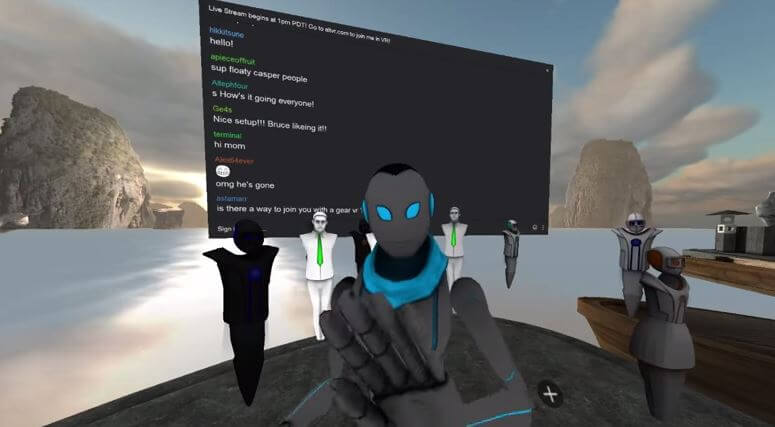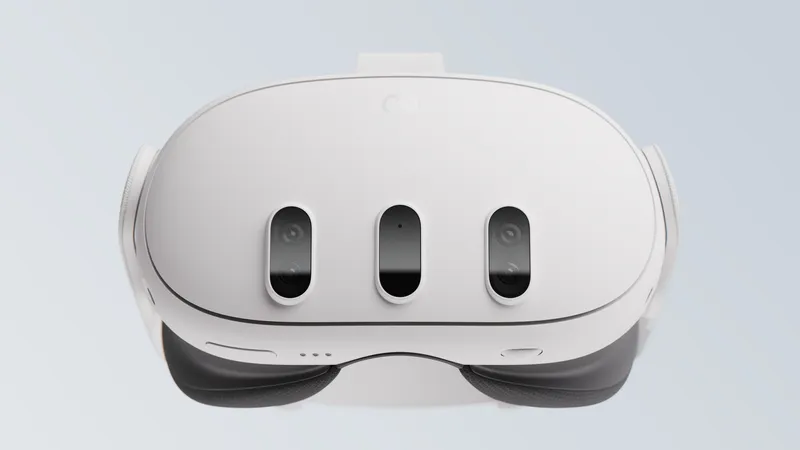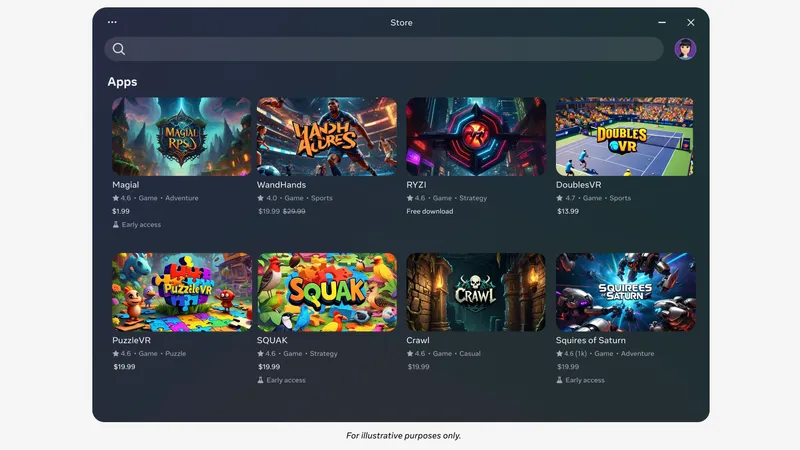Give E McNeill credit; he managed to make the latest generation of video game brand wars seem almost peacefully benign. As the developer behind indie VR darlings Darknet and Tactera, McNeill has learned quite a lot about the four major champions of soon-to-be consumer-ready VR headsets and how to develop for them. Just like each consumer must balance their options when buying a new console or hardware upgrade, the world of VR developers has never had more options to choose from. And with those options, often comes confusion.
For a developer, it’s not enough to look at the surface of a VR headset when deciding which one to develop a game for. Challenges lie in determining the type of experience each one offers best, and how the surrounding company culture can impact the often years-long development process. McNeill took to the stage at the 2016 Game Developers Conference to share what he learned with a packed crowd of indie developers and consumers for his talk: Two Games, Four Platforms: A VR Platform Comparison.
Designing a Dream, Developing a Nightmare
McNeill knows well enough to plan ahead, and so should each developer, he said. A choice made in the development of a game can have beneficial or disastrous results for the overall experience depending on the headset it’s developed for.
One thing is clear, each and every VR developer – whether they’re working on something for the Oculus Rift, Gear VR, PlayStation VR, or HTC Vive – will inevitably have to deal with commonalities like player nausea, user interface issues, and the challenges of 3D. Where development risks differ is based on system performance requirements, primary or secondary input options like the PlayStation Move controller, and room-scale tracking capabilities that allow players to get up off the couch.
Currently, only the HTC Vive has true out-of-the-box room-scale tracking, meaning in an ideal situation you’ll be able to move around in-game without worry about smacking into the wall, or a loved one. This and the included motion-tracked controllers give it an incredible advantage in play, but largely at the risk of alienating players with the highest spec requirements of the whole bunch. It can also causes issues for developers, knowing that every player’s living room is different.
Some players might recognize the “cockpit” presentation that’s common to popular titles like EVE: Valkyrie. These situations are where the PSVR and Oculus Rift shine. So long as players inhabit a static position (not counting in-game movement), positional tracking keeps these games feeling more visceral than the Samsung Gear VR. John Carmack might be biased as CTO of Oculus, but when a legendary developer recommends a swivel chair for Gear VR, you may have problems.
Making Friends
It’s easy to forget there’s a team behind every game, and likely an even larger team behind the major publishers escorting new titles into their libraries.
“All of these platforms seem to be genuinely developer-friendly and I think the big reason for that is because there’s high demand for games and developers,” McNeill said. “There’s no big audience right now, so there’s no big developer sucking up all the oxygen, so indies are big again, and demos are the currency of the realm.”
The Oculus and Gear VR have seen a wealth of indie titles pop up thanks to widely available development kits, while PlayStation and HTC Vive have more rigorous application processes. If you’re an indie developer or bargain connoisseur, this means Oculus might offer a better bang for your buck, comparatively few as it might be. When Oculus announced they were investing $10 million into indie games last year, it demonstrated a clear intent to support teams willing to make the leap into VR. That money is still largely circulating to potential developers, according to McNeill.
The Almighty Dollar
At the end of the day, anyone wanting to make a living from creating VR games must consider their bottom line. Obviously, the larger a developer’s player base, the more likely they’ll see commercial success.
McNeill’s advice on Oculus adoption seemed more positive than perhaps most. McNeill made the case that Oculus’ strong pre-order sales and their goal of one million units sold bode well, despite an obviously intimidating sticker price. That’s nothing compared to the 35 million PlayStation 4 units sold by last January. According to McNeill, the Vive is positioned to take on the same role the PC has long held, regarded as an enthusiast product, and ostensibly one that should be upgraded every few years.
To McNeill, one of the most important things for future VR developers to consider is past trends in gaming, without diving into foolish analogies.
“When people talk about the emergence of VR, they try to make it an analogy like ‘maybe it’ll be like the console wars where we have stable platforms all in stiff competition,’ or like the mobile app store where you want to get in during this period of growth, or like micro consoles that had prominent, successful kickstarters, but ultimately didn’t get very far,” McNeill said.
The truth, McNeill says, is some combination of all those and more. And outside the realm of developers, consumers have an equally tough set of questions to ask themselves when adopting.
“I’ve heard the PlayStation guys saying they know that they’re not quite at the same level of the Oculus Rift in terms of straight up quality,” McNeill said. “But that maybe people don’t care about that. If I’m a consumer that doesn’t have a compatible PC, but I have a PS4, it makes more sense to go with PlayStation.”
That doesn’t discourage McNeill’s hopes for the Rift or Vive, though. If you’re a PC gamer, there’s an entire ecosystem dedicated to maintaining that hardware and software, including exclusive Steam support.
Perhaps most telling was McNeill’s parting words for his audience. The only answer is the one that best applies to you. If mobile VR appeals to a developer, they need to adopt it early in the same manner as the mobile games market. For financially struggling developers, the Oculus’ massive investment or PlayStation’s installed fanbase ensure some level of success. If you’re just “batshit crazy,” or just want to hedge your bets, McNeill wouldn’t fault any developer for trying all four. He certainly has, and it’s a perspective that’s worked wonders for him thus far.
—
Joseph Knoop is a freelance writer with work published at Game Informer, PC Gamer, Playboy, and other outlets. You can follow him on Twitter: @JosephKnoop.






























